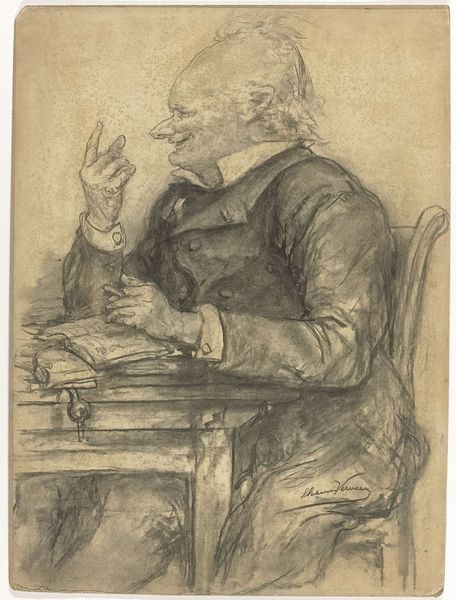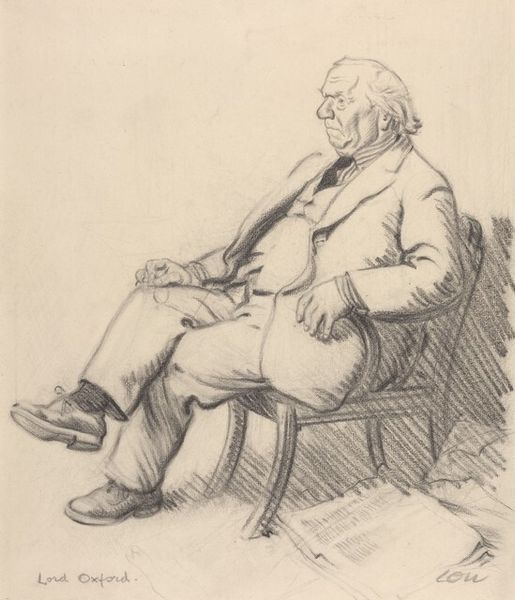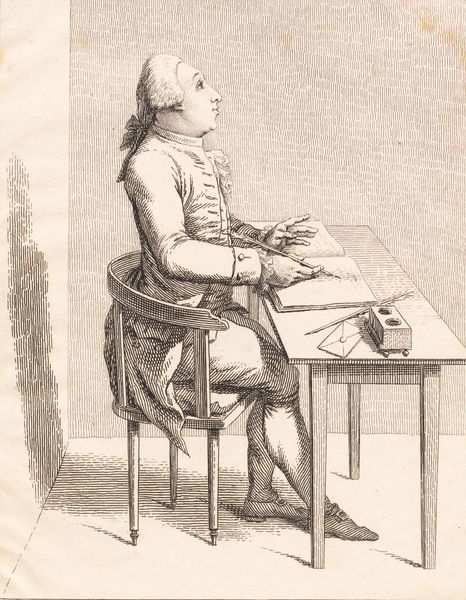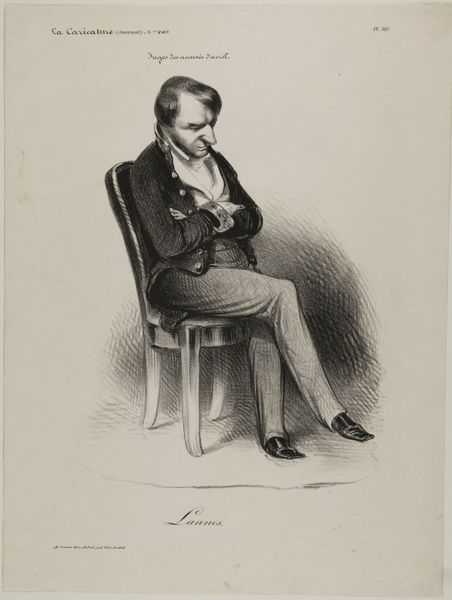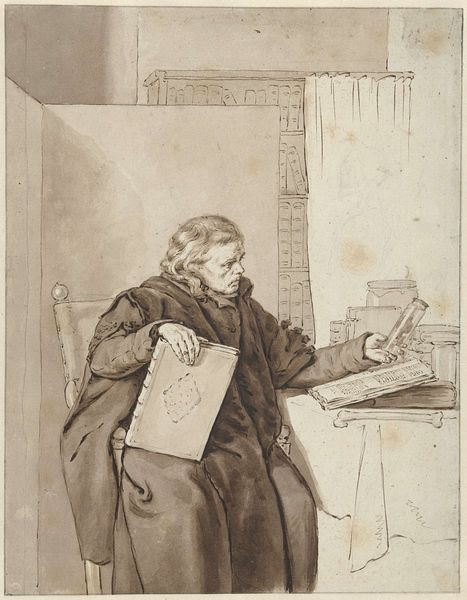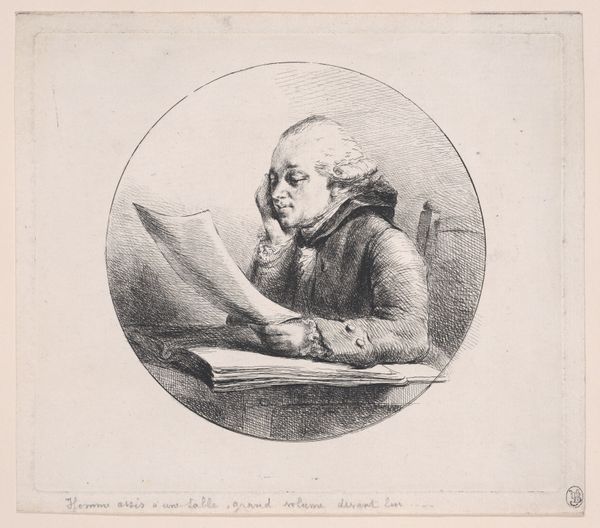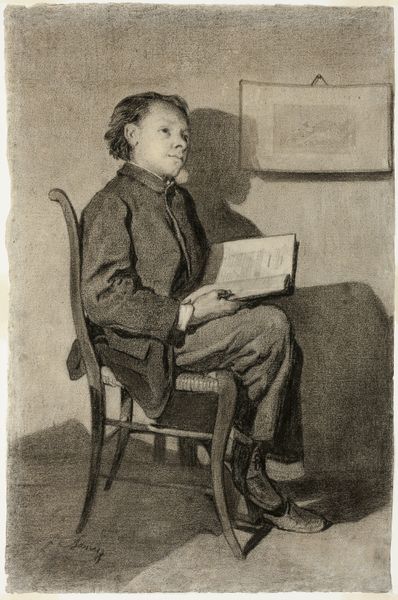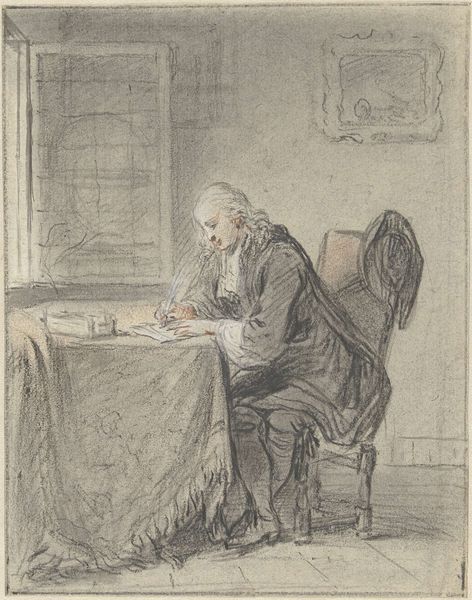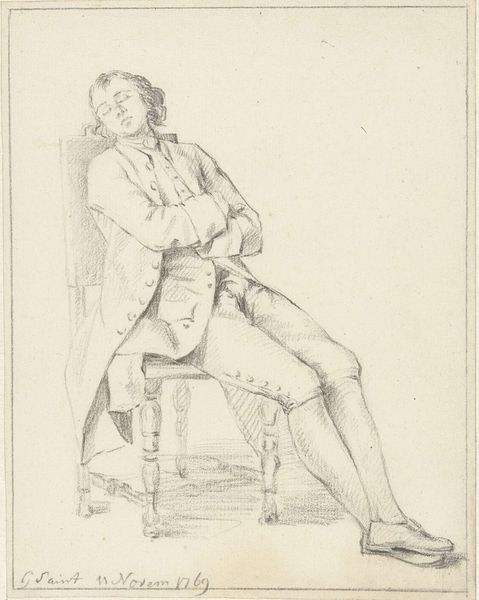
Dimensions: 205 x 133 cm
Copyright: Public domain
Curator: A sense of quiet contemplation just washes over me. It's melancholic, isn’t it? Almost theatrical with that dark background. Editor: You’re looking at Goya’s 1798 portrait of "Gaspar Melchor de Jovellanos" currently housed in the Museo del Prado. The oil painting portrays a key figure of the Spanish Enlightenment. A Neoclassical work infused with the burgeoning Romantic spirit, wouldn't you agree? Curator: Absolutely. The trappings of the era are all here, the refined attire, the desk laden with documents, but his expression speaks of something deeper. That faraway gaze, almost yearning. It pulls us away from the purely political. What do you think the statue symbolizes? Editor: Interesting you point that out. This depiction serves as more than a mere likeness. It embodies Jovellanos's dedication to justice and civic virtue. He was, after all, a staunch reformer. The statue would signify the virtues he fought to protect. Minerva, I believe, goddess of wisdom. A commentary on Jovellanos’ own fight and perhaps its ultimate cost? Curator: It gives a more nuanced reading. His face projects weariness but resolve as well. He holds a paper, suggesting active engagement, yet the overall mood is one of introspection. Is he burdened by the task? By the weight of his convictions? And the way Goya lights his face against the inky backdrop intensifies the drama. Editor: I think you’ve touched on an essential tension in Goya’s work of this period: portraying an individual while hinting at the complex social and political environment around him. Goya's sympathies clearly lie with Jovellanos, showing the weight carried by reformers during politically turbulent times. And we must consider Goya's own political leanings as well, his relationships to power. This could be read as an endorsement, or even a subtle critique of the burden of leadership. Curator: So it becomes a complex visual metaphor. That melancholic tone speaks volumes about the climate of the late 18th century. Very thought-provoking. Editor: It does encourage one to ponder the intricacies of power, conviction, and representation in a historical light. And as such it serves as a striking piece of historical memory, even now.
Comments
No comments
Be the first to comment and join the conversation on the ultimate creative platform.
